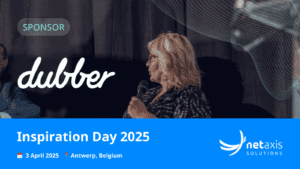Replacement Strategy for Broadsoft Classic Portal (LOKI)
By Trefor Davies and Bart Coelmont
Exec summary
Earlier in 2018 cloud communications platform market leader Broadsoft announced the withdrawal of support for its customer self care and provisioning portal (LOKI). The move leaves hundreds of telcos and cable operators whose business is based on Broadsoft with the need to find an alternative solution.
This paper looks at the problem and proposes a Netaxis solution that not only replaces LOKI but provides flexibility allowing users to further evolve and differentiate their services whilst at the same time facilitating easy integration with third party networks and applications.
Broadsoft background
Broadsoft is the leading software vendor in the cloud communications space. The Broadworks platform in its various guises is used by hundreds of service providers globally to deliver SIP trunking, hosted PBX and UC As A Service solutions.
Broadsoft based solutions are deployable in almost any type of network – fixed, mobile, IMS, standalone and so on. In addition, scalability, a multi-tenant architecture and high reliability have combined to bring Broadworks huge commercial success.
A weak link in the Broadworks proposition was always the complexity of its native web portal which requires a high degree of platform knowledge and expertise to operate. Because of this and recognising that in today’s market customers demand simple low touch online operation network operators have sought a solution that sits between the Broadsoft platform and users.
The LOKI alternative
LOKI, a Leonid Systems product, was such a solution and this portal was widely adopted. A knock on effect of this success was that the services offered generally looked very similar with little differentiation.
LOKI was promoted by Broadsoft from 2012. In 2015 Leonid Systems were acquired by Broadsoft with a corresponding expansion of their user base.
There are two components to LOKI:
LOKI portal: allows IT admins and end users to manage and configure their cloud PBX through the web (self management portal). This portal was renamed ‘Broadsoft classic portal’.
LOKI provisioning: internal service provider portal not to be exposed to end users but used to provide a more efficient operation of services. eg addition of new enterprises, groups and sites, users. This portal is now known as ‘Broadsoft classic provisioning portal’.
Broadsoft themselves were acquired by Cisco in 2017 and following this a decision was made to end support for LOKI in 2019.
PIE – A LOKI alternative by Netaxis
For users looking to replace LOKI there are a number of options. Netaxis Solutions have their own independently developed self management portal called called PIE (easy as pie).
The PIE portal supports multiple user types:
- end users: basic feature management (call forwarding, BS anywhere etc), view call logs, phone book management & click to dial, personal week schedules (eg to manage call forwarding), status configuration for call centers, etc…
- customer admin: manage all domain users, create & configure hunt groups, auto-attendants, call centers, etc. as well as define company wide schedules, holiday calendars and much more.
- reseller: can view and manage all their customers and their users.
- support admin: can view and manage all customers & their users (a support admin would be a L2 or L3 support)
Designed to differentiate – an example
The PIE concept provides a portal that both offers the functionality of the Broadsoft Classic Portal and allows Operators to differentiate their services from those of their competition.
A good example is in the world of fixed-mobile convergence services where users need to be able to access both personal and business modes of operation. “Business” mode typically facilitates outbound calls with a business CLI and allows users to be reachable both on their desktop and/or mobile devices
This can be done on the Broadworks platform using “Broadsoft anywhere” with Shared Call Appearance. However the function is complex and not particularly easy for users to understand when using the Broadsoft Classic Portal.
The Netaxis philosophy is the belief that user experience should be the first consideration. The best technical implementation is then driven by this. In the fixed-mobile space considered here this could be using perhaps the Initial Filter Criteria in the IMS network or some other completely different mechanism. II will depend purely on the application.
When it comes to user portals one size just doesn’t fit all. Buying a generic solution and then simply applying your own branding is fine for jump starting your proposition but rarely supports the longer term needs of the business. Every customer is different and successful Service Providers will be the ones who can satisfy these varying needs.
This is where the API Orchestrator (APIO) comes in.
APIO: an evolution of PIE
The initial build of PIE was a web application that interfaced directly with the Broadsoft platform by leveraging the exposed API. This API comes with a proprietary OCI-P format/protocol requiring a high degree of expertise in Broadsoft configuration. PIE made it easier to work with.
During the initial development phase our number one concern was to solve the non-optimal out of the box experience provided by Broadsoft. However it was also clear from an early stage that every customer had their own different requirements especially when it came to features wanted by the business market.
Meeting the needs of business customers is not always straightforward and service providers rarely fully rely on the Broadsoft suite, resorting to third party platforms. For example voicemail, IMS, monitoring, billing & order management.
The difficulty is how do you offer customers a unified experience encompassing all these different elements. There are some innovative applications that also now enter the realms of the desirable. How about automatically changing user status from private to business when a user arrives in the office in the morning? Or maybe asking Alexa to call someone in your phonebook?
The PIE architecture was reworked dividing it into an API Orchestrator and a front end portal:
- APIO:
- serves as API back end offering developer friendly REST APIs, the de facto standard for web APIs
- natively integrates with Broadsoft but with the aim of supporting other technologies such as other application servers (e.g. Metaswitch), Cisco HCS (currently setting up a partnership in this context), HSS, billing systems and more.
- APIO is able to combine functionality of different back end APIs into a single simple and very powerful API.
- Web front end:
- All business logic is removed from the front end and moved to the back end
- The only goal of the front end is to show the available content and functionalities in a way which is easy and as user friendly as possible, removing any possible notion of Broadsoft jargon
- The front end consumes the REST APIs that are exposed by APIO
- Introduce other key elements such as mobile responsiveness – covered later in this paper
APIO – the business value
Developers don’t know or want to care about the data model of a subscriber in your HSS, nor premium licenses in a Broadsoft platform. They want higher levels of abstraction provided by APIO. Furthermore, when you upgrade or change modify a network element such as a HSS or a Broadsoft platform, the major cost is often down to the modifications required to the surrounding IT integrations. With APIO, this effect is minimized.
Once this API layer is in service it can be used for multiple purposes such as integration into your own OSS stack or maybe expose your own API’s to third parties such as reseller. APIO offers a way to the creation of a truly digital ecosystem.
Platform independence
An abstract API layer not only allows you to make life easier for you customers but brings in some serious benefits to your business operation.
In the first instance you could run a dual platform strategy minimising your reliance on one vendor. Your common IT and customer facing infrastructure could interface to two Applications Servers. This is either an insurance policy or a means to seamlessly migrate customers from one legacy AS to a new one.
Version number changes easier also become easier to manage when hidden behind an API layer. Methodology changes for features need only be accommodated at the API interface.
And the front end?
Our front end development continues with state of the art technologies. We have a natural preference for Vue.js but we can work as well with React or Angular. These are javascript frameworks which are completely changing the way front ends are developed. They can be used to make single page applications whereby visitors download a HTML template with all data being fetched via API calls to an API backend. These frameworks also allow us to cut up the front end into smaller components which can later be easily combined into new web experiences. This will allow us to provide an appropriate amount of flexibility in the front end while managing the costs of development.
On top of APIO Netaxis provide a number of out of the box portal products that natively integrate with our REST APIs. These portals provide the following experiences
- Buying experience: online experience which allows (potential) customer to find & buy the solution online
- Administrator experience: online experience for an enterprise administrator to manage his hosted PBX/UCaaS (add, delete users, modify users, see usage & adoption, …)
- User experience: online experience for users to manage their settings and services but also to use them
These out of the box products are merely a starting point. We noticed that customers ask for out of the box products which can be used immediately but which are easily extendible. When you embark on a journey with Netaxis, we will work together with you to deliver the business capabilities that match with the expactions your customers expect and desire
Talk to us about your LOKI replacement strategy?
Netaxis firmly believe that our strategy is the right way to replace your legacy LOKI portal. By working with us you will put your business in a position to efficiently evolve and differentiate. If you want to know more come and talk to us on our booth at Broadsoft Connections in Miami. Also feel free to contact us via sales@netaxis.be.s





